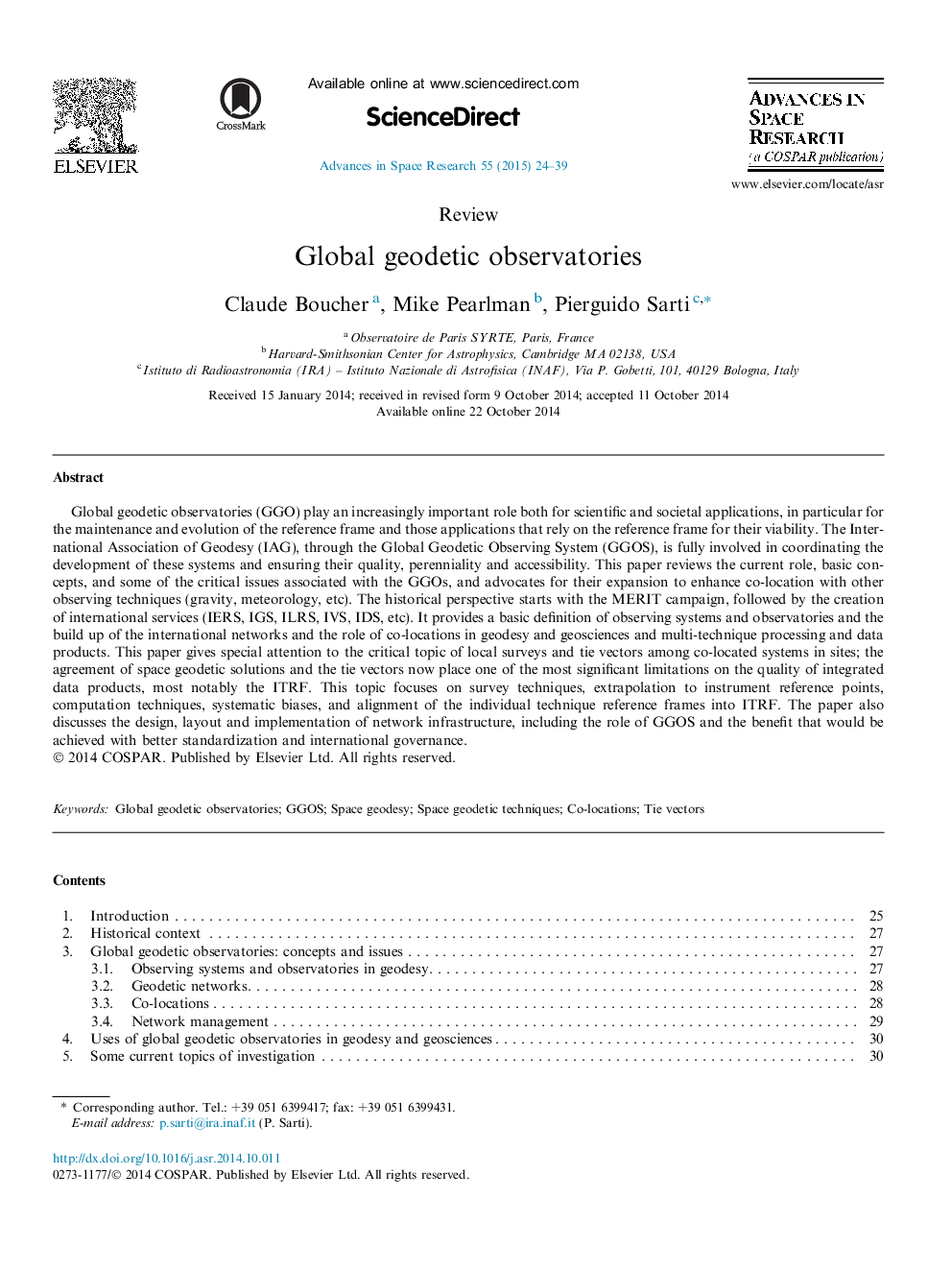| Article ID | Journal | Published Year | Pages | File Type |
|---|---|---|---|---|
| 1764109 | Advances in Space Research | 2015 | 16 Pages |
Global geodetic observatories (GGO) play an increasingly important role both for scientific and societal applications, in particular for the maintenance and evolution of the reference frame and those applications that rely on the reference frame for their viability. The International Association of Geodesy (IAG), through the Global Geodetic Observing System (GGOS), is fully involved in coordinating the development of these systems and ensuring their quality, perenniality and accessibility. This paper reviews the current role, basic concepts, and some of the critical issues associated with the GGOs, and advocates for their expansion to enhance co-location with other observing techniques (gravity, meteorology, etc). The historical perspective starts with the MERIT campaign, followed by the creation of international services (IERS, IGS, ILRS, IVS, IDS, etc). It provides a basic definition of observing systems and observatories and the build up of the international networks and the role of co-locations in geodesy and geosciences and multi-technique processing and data products. This paper gives special attention to the critical topic of local surveys and tie vectors among co-located systems in sites; the agreement of space geodetic solutions and the tie vectors now place one of the most significant limitations on the quality of integrated data products, most notably the ITRF. This topic focuses on survey techniques, extrapolation to instrument reference points, computation techniques, systematic biases, and alignment of the individual technique reference frames into ITRF. The paper also discusses the design, layout and implementation of network infrastructure, including the role of GGOS and the benefit that would be achieved with better standardization and international governance.
